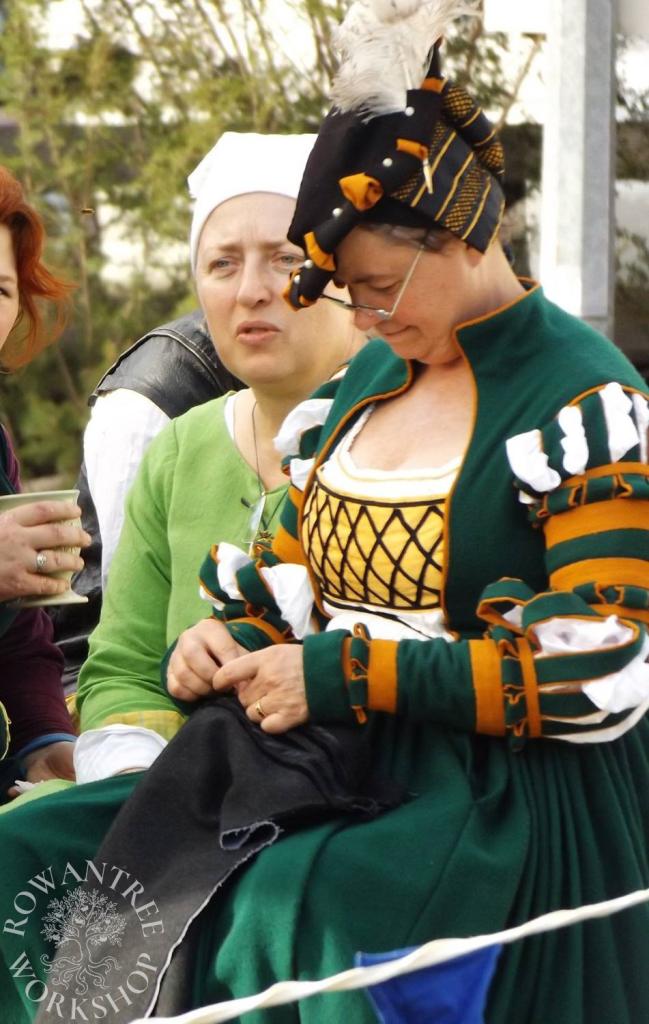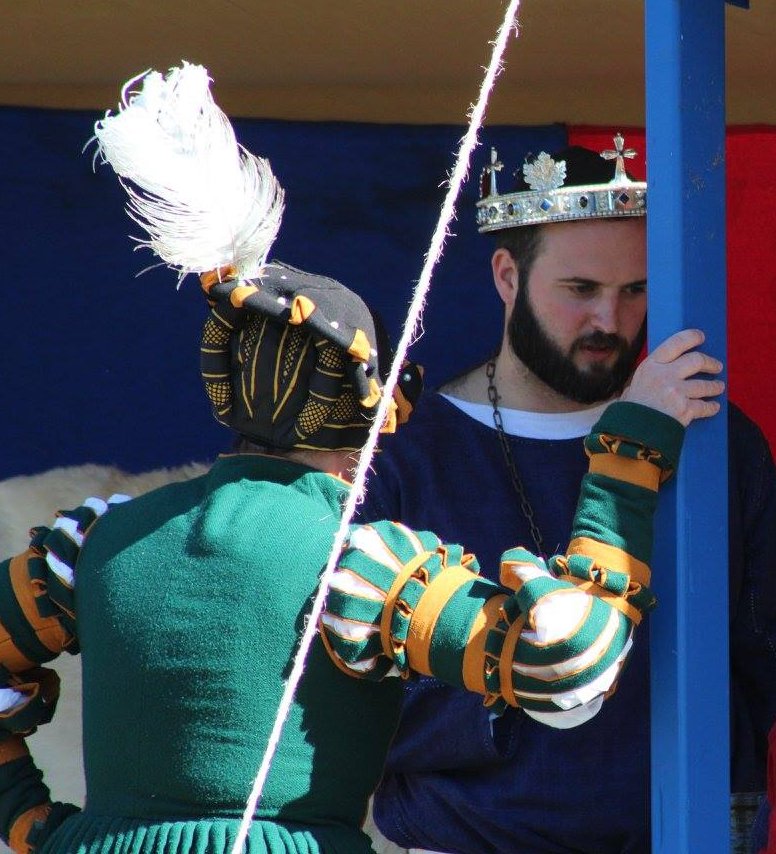An early 16th century Saxon style high-necked gown in green wool, for an upper class German woman.
This high-necked style is seen in paintings by Cranach and his contemporaries, from the 1520s – 1540s. The style is worn exclusively by noble women and is usually made of velvet or wool, trimmed with gold or rich brocade.

I wanted a really warm outfit to wear for a midwinter event down in Tasmania, which was expected to be very cold and probably wet. Velvet was not an option, but wool was ideal.
Research & Design
This gown was inspired by several paintings by Lucas Cranach the Elder, showing noble Saxony women out on hunting expeditions. I particularly liked the high necked gown in green, amongst all the red examples.
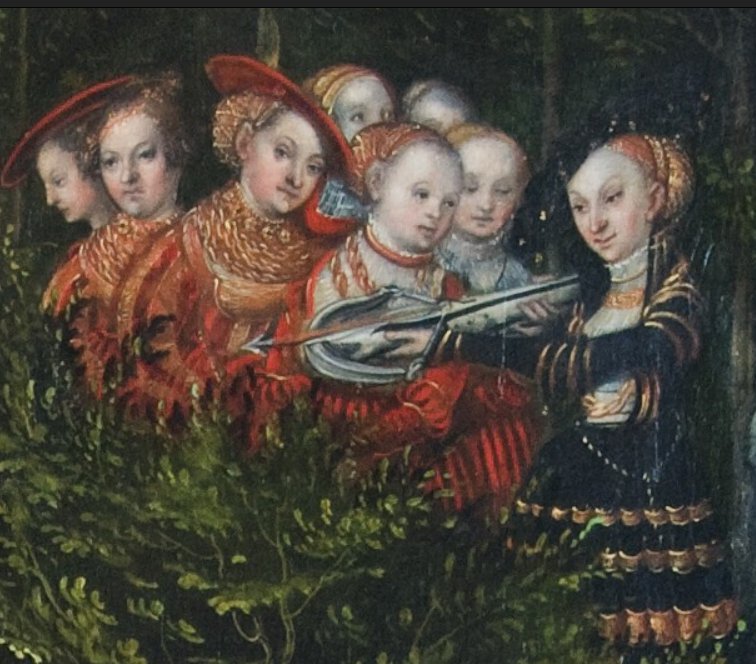
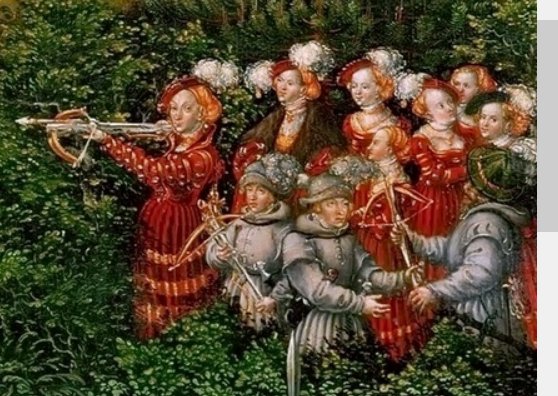
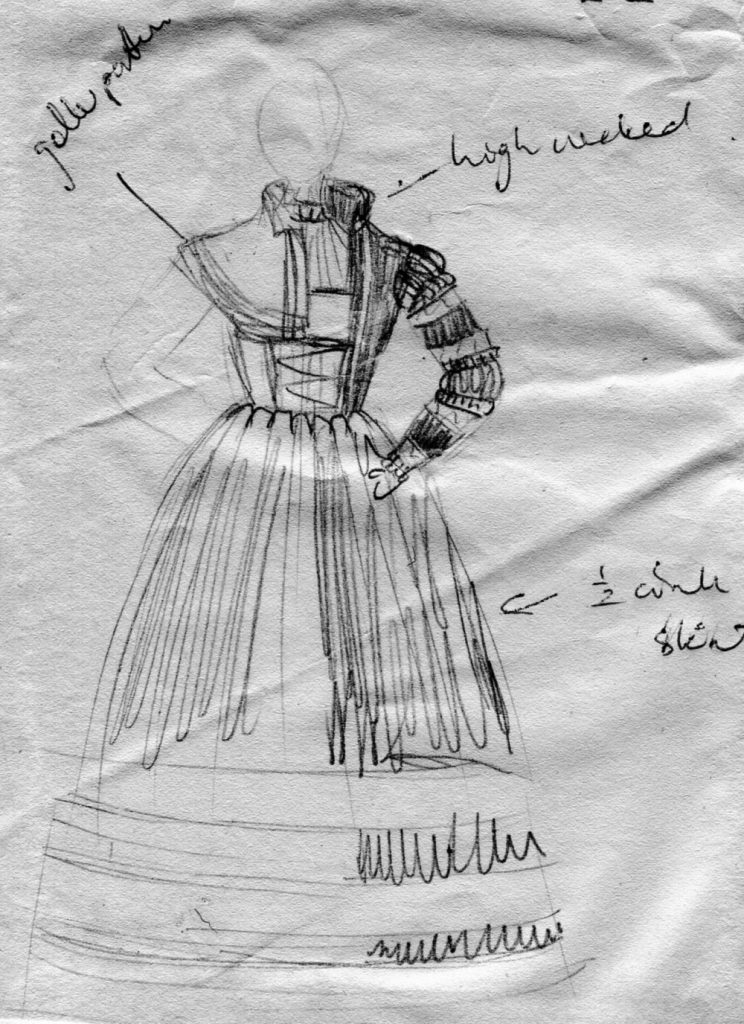
These images show several versions of the classic ‘Cranach’ style gown – high and low neck; closed bodice and open with Brustfleck; with several sleeve variations. All have full, pleated skirts with several layers of gold coloured contrast bands and hem guards in gold.
The fabric in these paintings is hard to tell at this scale, but I thought it possible that it was wool, given the hunting context (although who can tell with nobility?!). I had several meters of a forest green twill wool/polyester mix, bought on special. Finding a suitable inexpensive gold coloured fabric was hard – I ended up with a nice mustard fabric, but sadly synthetic.
Construction
For the bodice, I adapted the pattern of a previous high-necked gown I’d made for a friend’s wedding. The skirt is cut as a half circle, with a 6.6m hem. I made a full scale pattern for half of the skirt, to ensure I got the band curves correct.
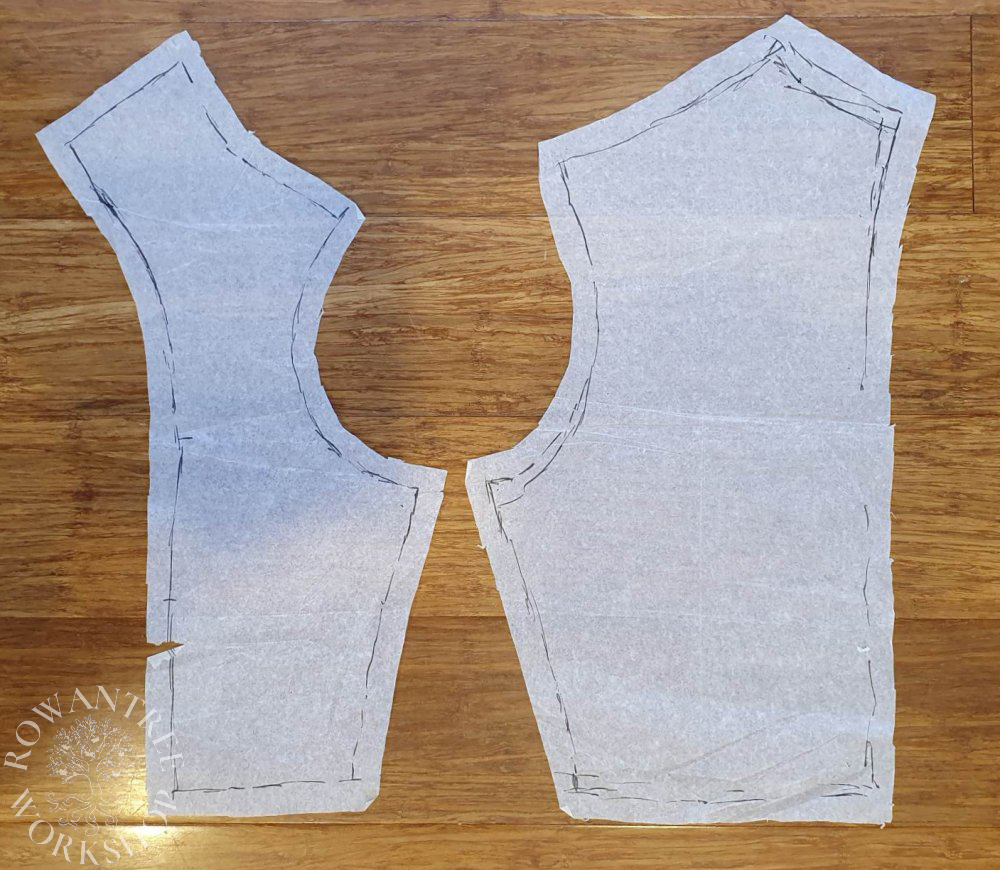
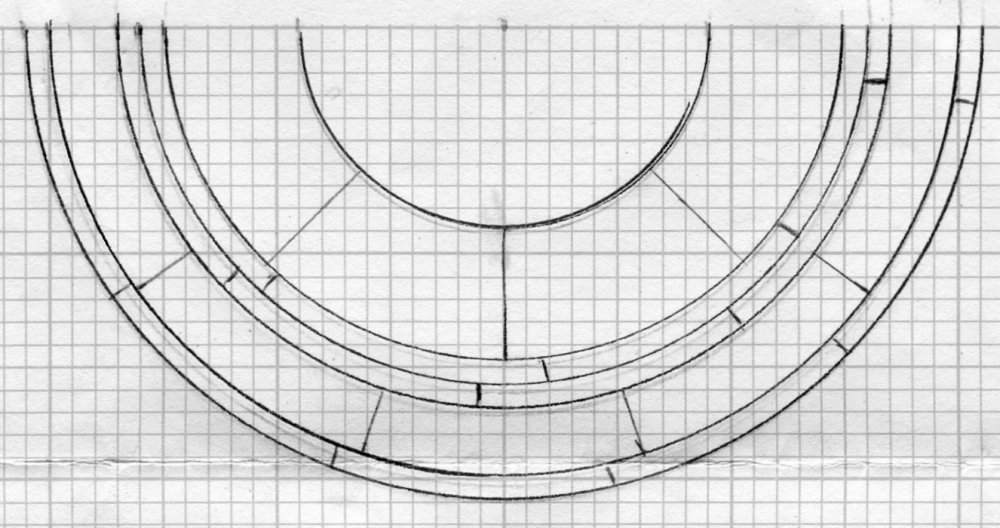
The top of the skirt is cut in 4 arced panels, sewed together to make a single flat piece. I cut the remaining bands the full width of the fabric, then joined them each into a long arcing strip. I added each strip in turn to the skirt, pressed well, then trimmed the side seams and joined the skirt, leaving 20cm open the top.
I made a part lining for the base of the skirt in green cotton, to hide all the seams. I machine-sewed this around them hem, then hand-sewed it to the top band seam inside.
The sleeves are a combination of strips and flat sections. The strips are made with a larger gold lining and narrower wool. Once turned and pressed, they look like a piped edge, with much less work. The green cotton lining extends under the ends of the strips, so they can be sewn in their puffed state. I hand-sewed the gold bands on the sleeves to decorate and hide construction.
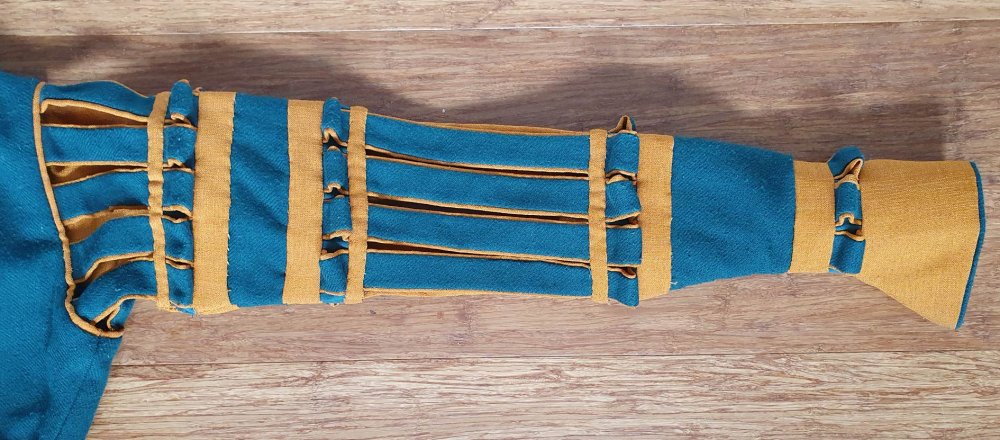
I made up the bodice in green wool, piped the neck edge and armscye in gold, and turned up a hem on the lower edge. I inserted the sleeves, then lined the bodice in green cotton.
The top of the skirt is faced, gathered and pleated onto the bodice. For the open section across the front, I attached the pleats to twill tape, sewing at both top and base. This provides a clean finish across the front section.
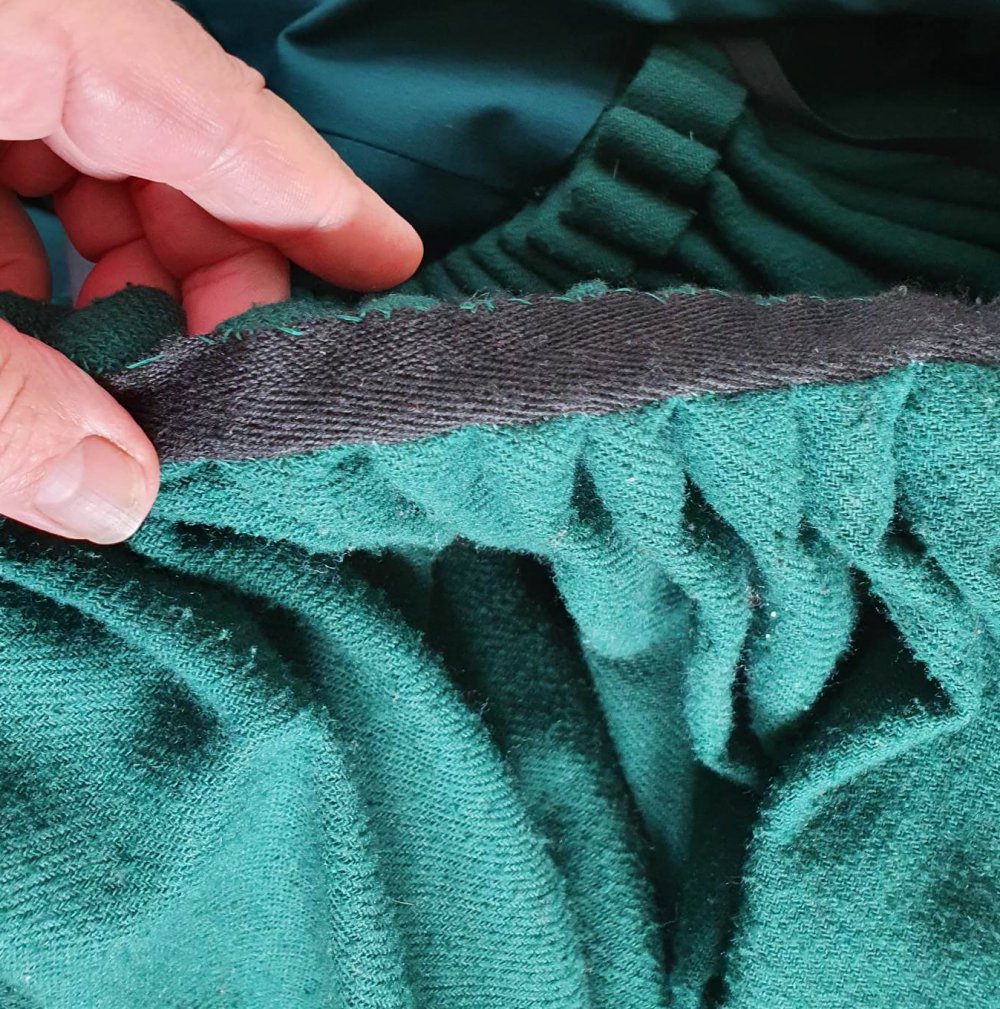
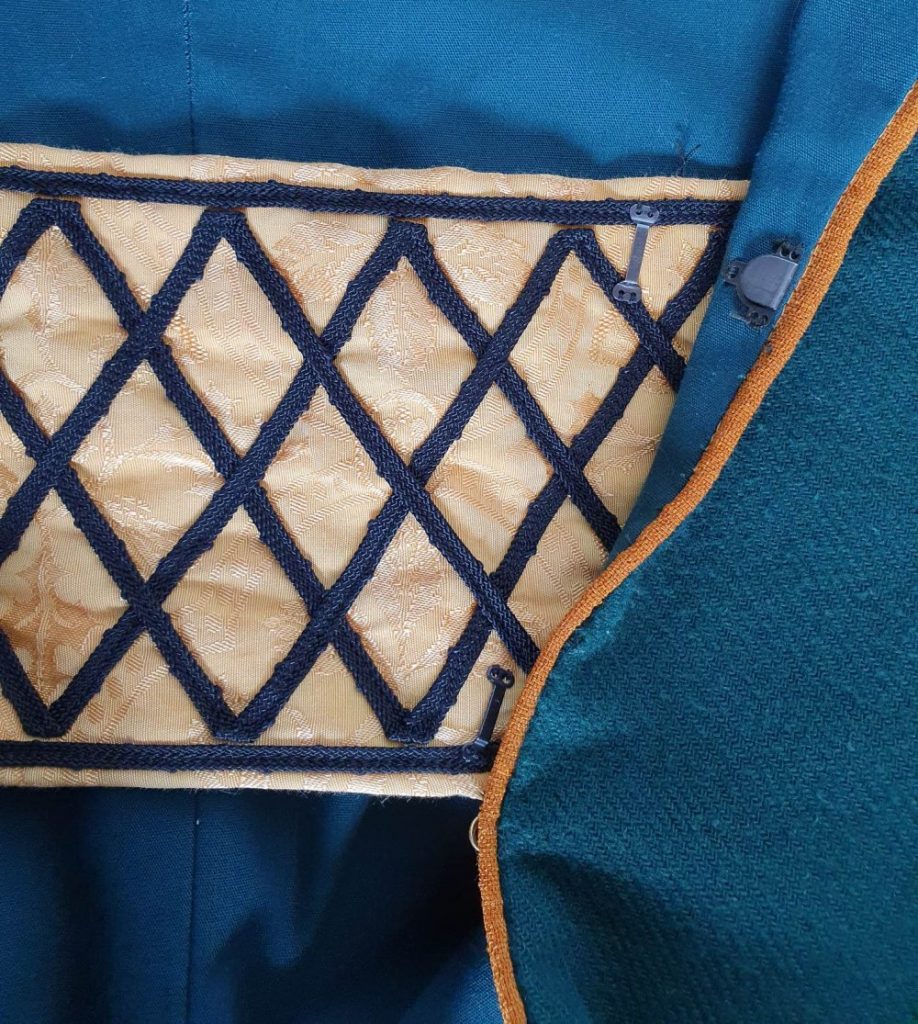
I made the original Brustfleck from a wide piece of green and gold brocaded trim, interfaced with canvas and lined. I sewed this in one side, then used trouser hooks to secure it on the other. I only hook the top and base, allowing the middle to bulge a little, as seen in the paintings. (The image above shows the replacement Brustfleck.)
Finally, I sewed small brass rings down the bodice lining to take the lacing.
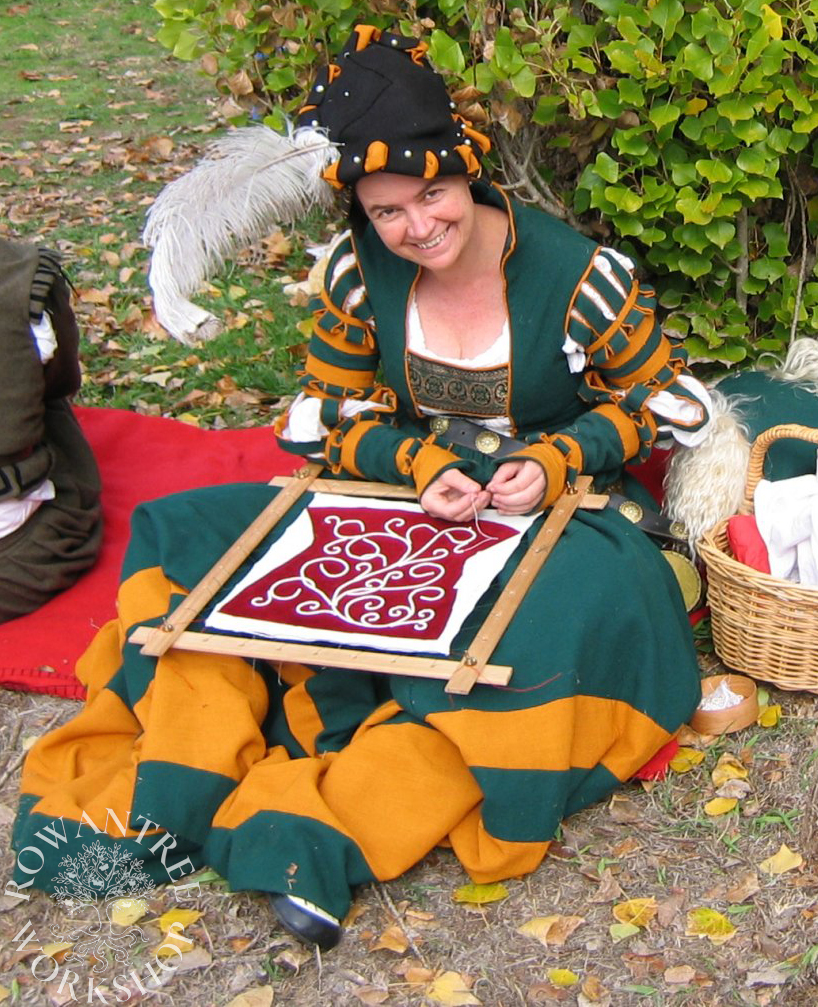
Goller
To complete the outfit, I made a Goller in the green wool, piped with gold and lined with a long-haired sheepskin I had been given. I used the pattern I had developed for my black velvet outfit. There are several images showing a fur-lined Goller, although they have much shorter fur!
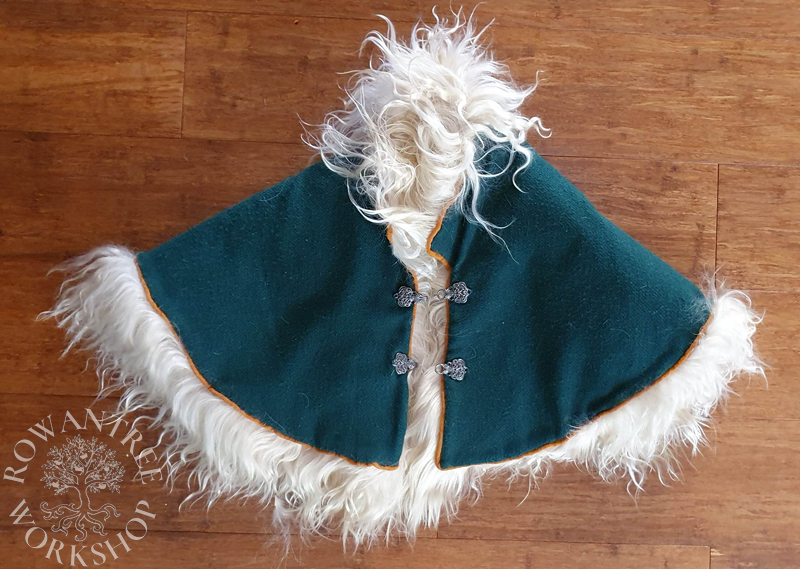
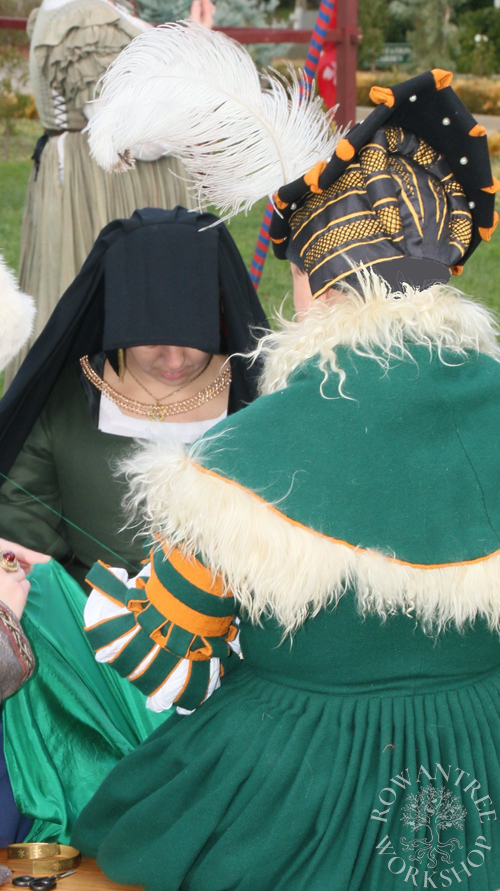
Afterthoughts
Once I changed shape, this gown hung unused in my wardrobe for many years. Then in 2014, I needed a really warm nice outfit to wear for Midwinter, with not much lead time. Updating my green wool looked like the easiest solution.
The arms were tight, but workable. I unpicked the front pleats and sewed them to a longer waistband, with less fullness in each pleat. I replaced the Brustfleck with a larger one – voilà! Decades after I first made it, it was back in use…
There are so many things I would do differently now, with both fabrics and construction. But for something I made in 1987 it still looks pretty good!
